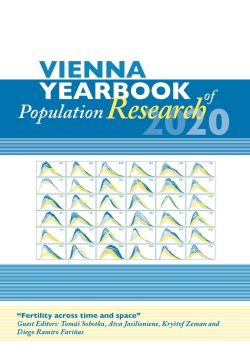
Vienna Yearbook of Population Research 2020, pp. 27-32, 2020/07/08
Fertility across time and space

The paper explores the key factors influencing future fertility trends both in low-fertility countries and in high fertility ones such as those in Sub-Saharan Africa. It briefly highlights important factors impacting fertility in advanced low-fertility nations: delayed childbearing, labor market changes, artificial reproduction techniques, and the influence of digitalization. Considering the limited impact of policies aimed at increasing fertility in low-fertility countries, significant changes in fertility rates are more likely in regions like Sub-Saharan Africa, with later and slower transition than other regions. The rest of the paper focuses on how political stability and the international political economy may affect African fertility (and global fertility), both currently and in the future. First, it identifies political instability, weak governance, and traditional pronatalist practices as significant barriers to fertility decline in Africa. Second, the study discusses how immigration policies and the welfare state in migrant-receiving countries may affect fertility trends, highlighting the role of migrant integration and labor market opportunities. Lastly, the paper discusses the influence of remittances and return migration on fertility norms in origin countries. It suggests that both financial and social remittances can contribute to development and fertility changes in high-fertility countries. The convergence of fertility levels between migrants and natives, facilitated by social media and communication technologies, is also an important factor for future convergence across the world. Overall, it concludes that improving governance and political stability in high-fertility regions, alongside the global convergence of gender norms, could accelerate fertility decline worldwide.
Keywords: Fertility; Pronatalism; Political economy; Migration; Social remittances; Political instability